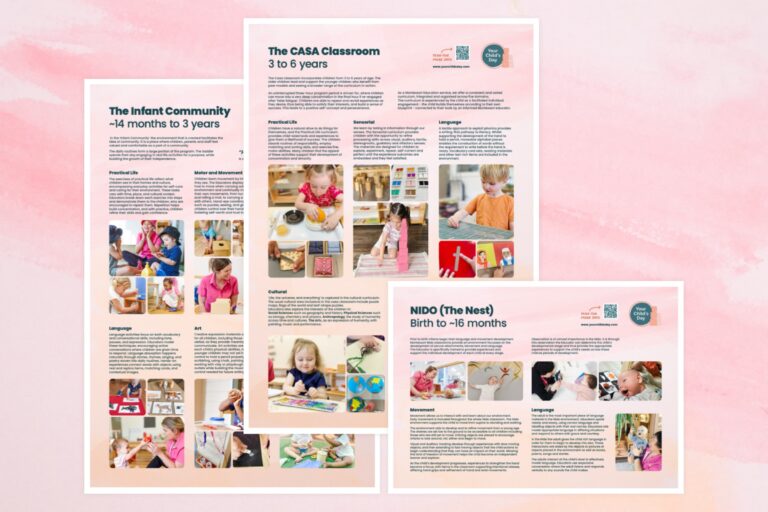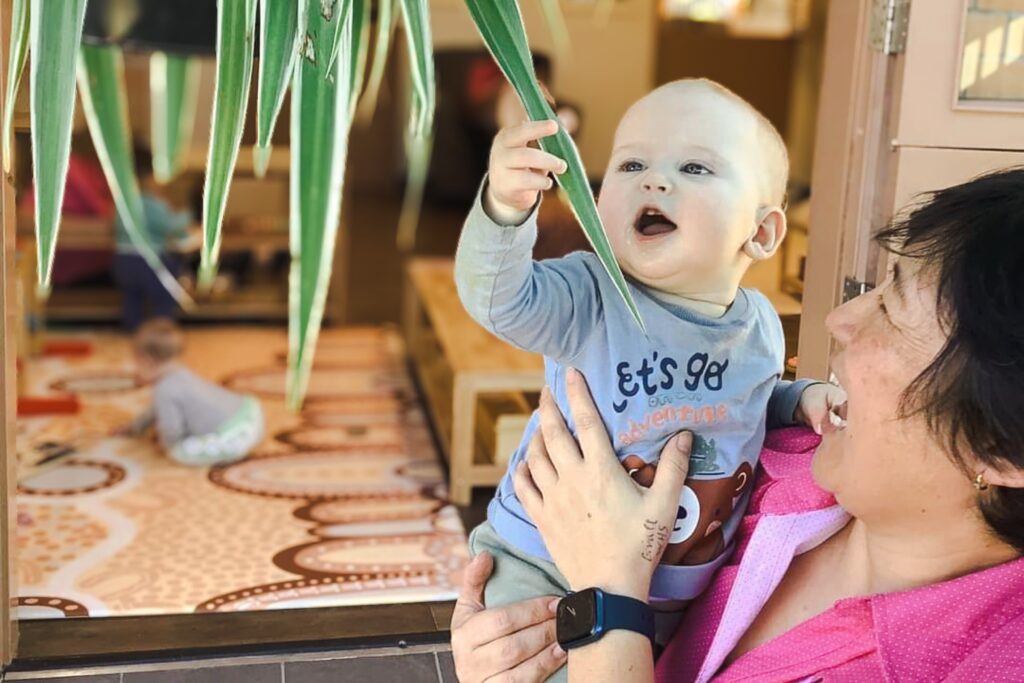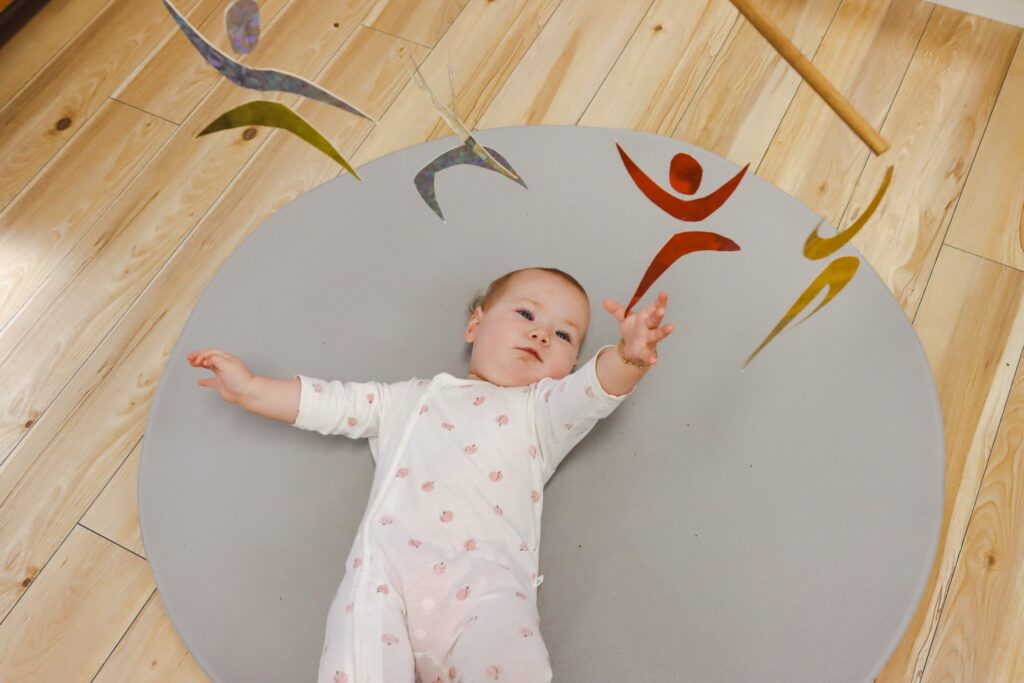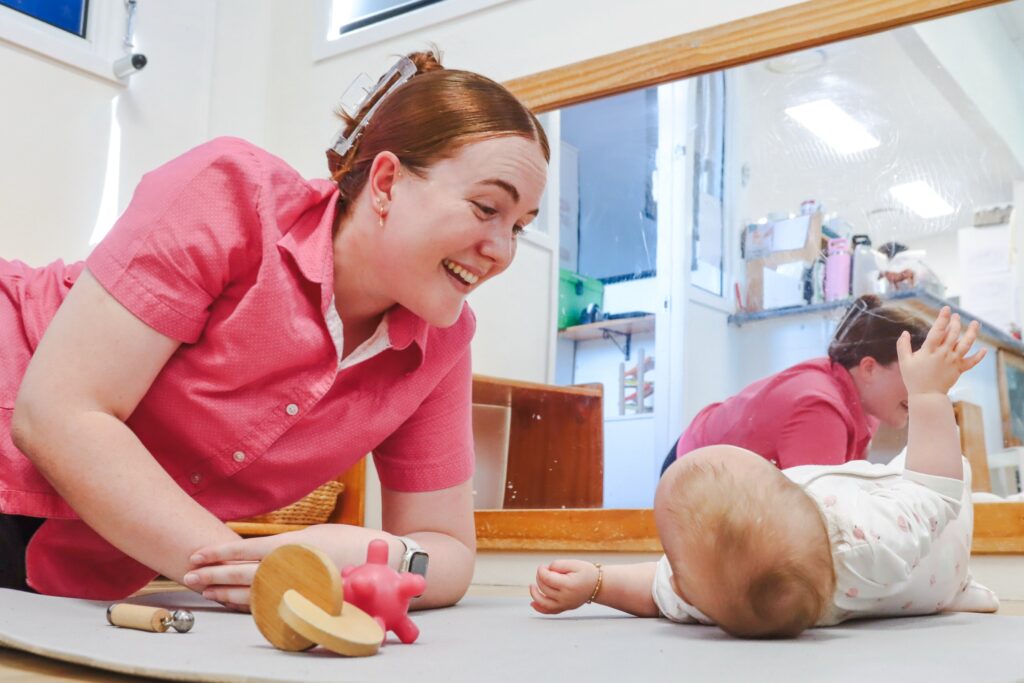Language
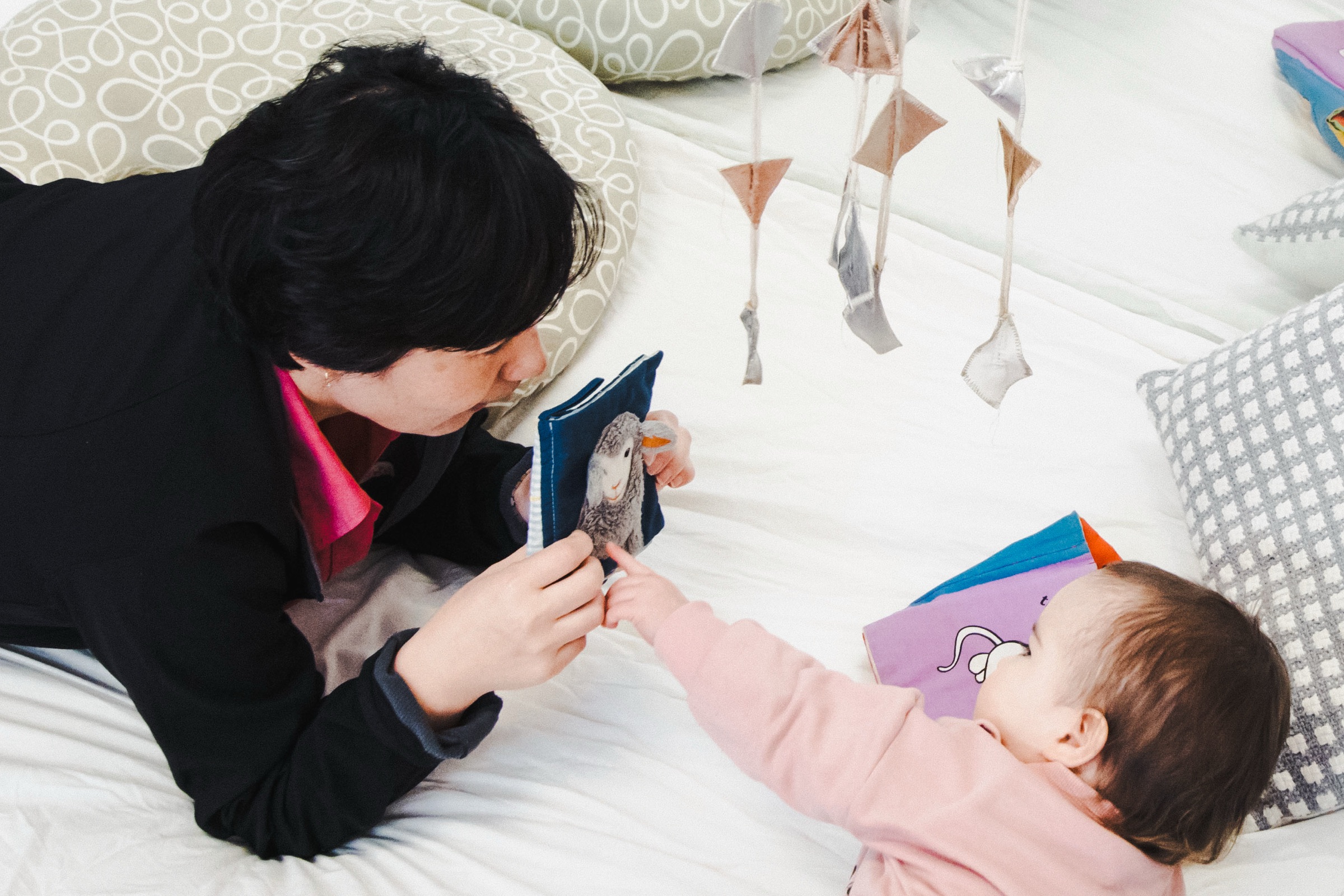
The adult is the most important piece of language material in the Nido environment. Educators speak clearly and slowly, using correct language and labelling objects with their real names. Educators role model appropriate language in differing situations and respond to others with grace and courtesy.
In the Nido the adult gives the child rich language in order for them to begin to develop this also. These interactions are aided by the objects or pictures of objects placed in the environment as well as books, poems, songs and stories.
The adults interact at the child’s level to effectively model language. Educators use responsive conversation where the adult listens and responds verbally to any sounds the child makes.
Language is the use of symbols or sounds to communicate. Maria Montessori says that the child is not born with language but the ability to learn language.
The whole process of the development of language relies on the myelinisation process. There are two areas of the brain that are a part of this process. The Wernicke and Broca areas.
The Wernicke Area is all about the processing of the meaning of words that is comprehension. This area starts to develop just before the Broca area.
The Broca Area is all about processing the order of words that is syntax. “Go me park” = “Can we go to the park?”
Each area has a different job to do.
For the young child to master the language of his culture he must:
- learn what to say
- how to say it, and
- to whom to say it.
The child internalises these rules. They take them in from the environment and the people around him. They are not taught to the child. Think of the process of learning to speak.
There are four necessities for language:
- Healthy and functioning auditory apparatus – ears to hear.
- Healthy and functioning vocal apparatus – mouth to speak. (Hair lips and cleft palate can make this difficult.)
- Live in a rich language environment.
- Have a desire to speak.
The child through experience (immersed) will analysis the spoken word internally and then synthesis the words. Think of a 9 month old child. They understand what we say to them as we see them following directions from us. Before they can speak they can understand language. This is the Pre-linguist phase of language.
As the Educator is the understands the development of language, they will pause to allow the child the opportunity to respond, whether that be with a word, sound or movement. Language will always be directed at the child and you will see Educators down at the child’s level.

